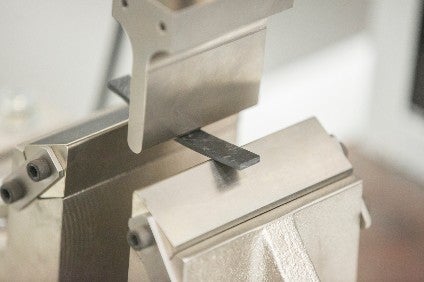
Ford said it would soon be using graphene – a two-dimensional nanomaterial – in vehicle parts.
Graphene has recently generated enthusiasm in the automotive industry for paint, polymer and battery applications.
Dubbed a ‘miracle material’ by some engineers, graphene is 200 times stronger than steel and one of the most conductive materials in the world. It is a great sound barrier and is extremely thin and flexible. Graphene is not economically viable for all applications, but Ford, in collaboration with Eagle Industries and XG Sciences, has found a way to use small amounts in fuel rail covers, pump covers and front engine covers to maximise its benefits.
Graphene is already used in coating, cell phones and some sporting goods.
“The breakthrough here is not in the material, but in how we are using it,” said Debbie Mielewski, Ford senior technical leader, sustainability and emerging materials.
“We are able to use a very small amount, less than a half%, to help us achieve significant enhancements in durability, sound resistance and weight reduction – applications that others have not focused on.”

US Tariffs are shifting - will you react or anticipate?
Don’t let policy changes catch you off guard. Stay proactive with real-time data and expert analysis.
By GlobalDataGraphene was first isolated in 2004, but application breakthroughs are relatively new. The first experiment to isolate graphene was done by using pencil lead, which contains graphite, and a piece of tape, using the tape to pull off layers of graphite to create a material that is a single layer thick – graphene. This experiment won a Nobel Prize in 2010.
In 2014, Ford began working with suppliers to study the material and how to use it in running trials with auto parts such as fuel rail covers, pump covers and front engine covers. Generally, attempting to reduce noise inside vehicle cabins means adding more material and weight, but with graphene, it’s the opposite.
“A small amount of graphene goes a long way, and in this case, it has a significant effect on sound absorption qualities,” said John Bull, president of Eagle Industries.
The graphene is mixed with foam constituents, and tests done by Ford and suppliers has shown about a 17% reduction in noise, a 20% improvement in mechanical properties and a 30% improvement in heat endurance properties, compared with that of the foam used without graphene.
Philip Rose, XG Sciences’ chief executive officer, said: “Working with early adopters such as Ford Motor Company demonstrates the potential for graphene in multiple applications, and we look forward to extending our collaboration into other materials, and enabling further performance improvements.”
Graphene is expected to go into production by year end on over 10 under bonnet components on the F-150 and Mustang and eventually, other Ford vehicles.



